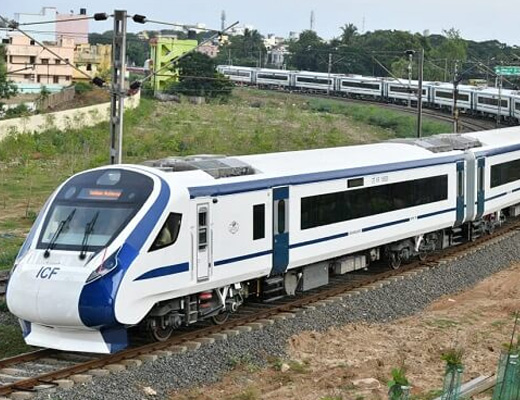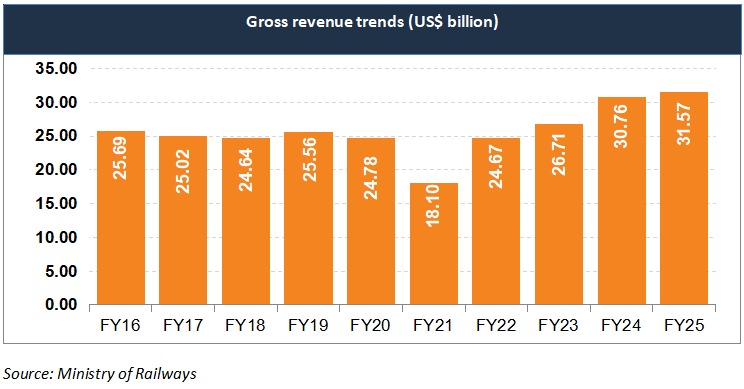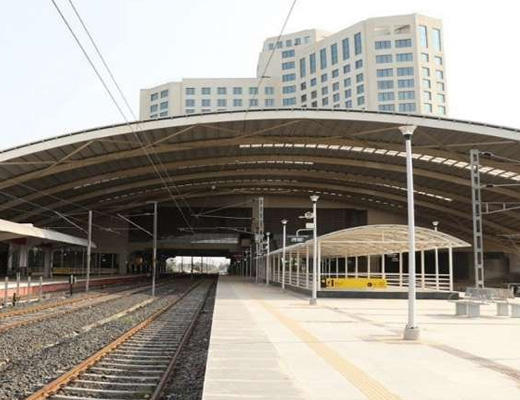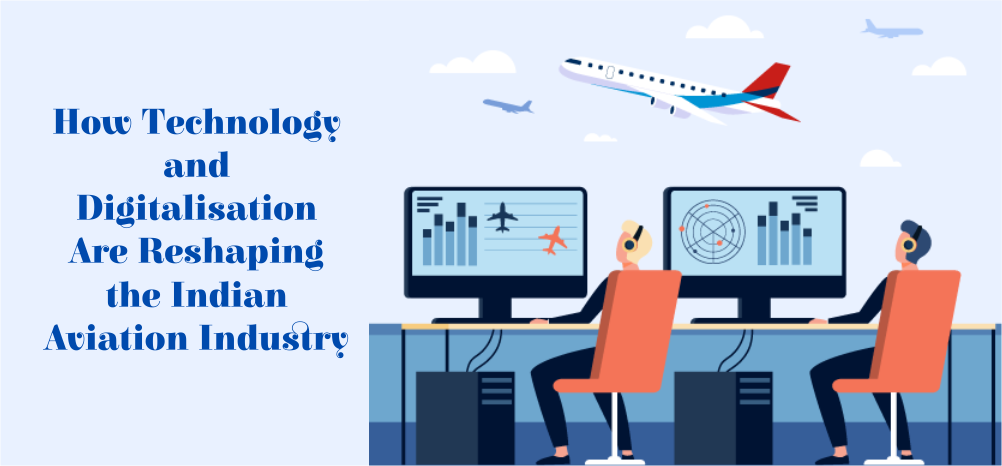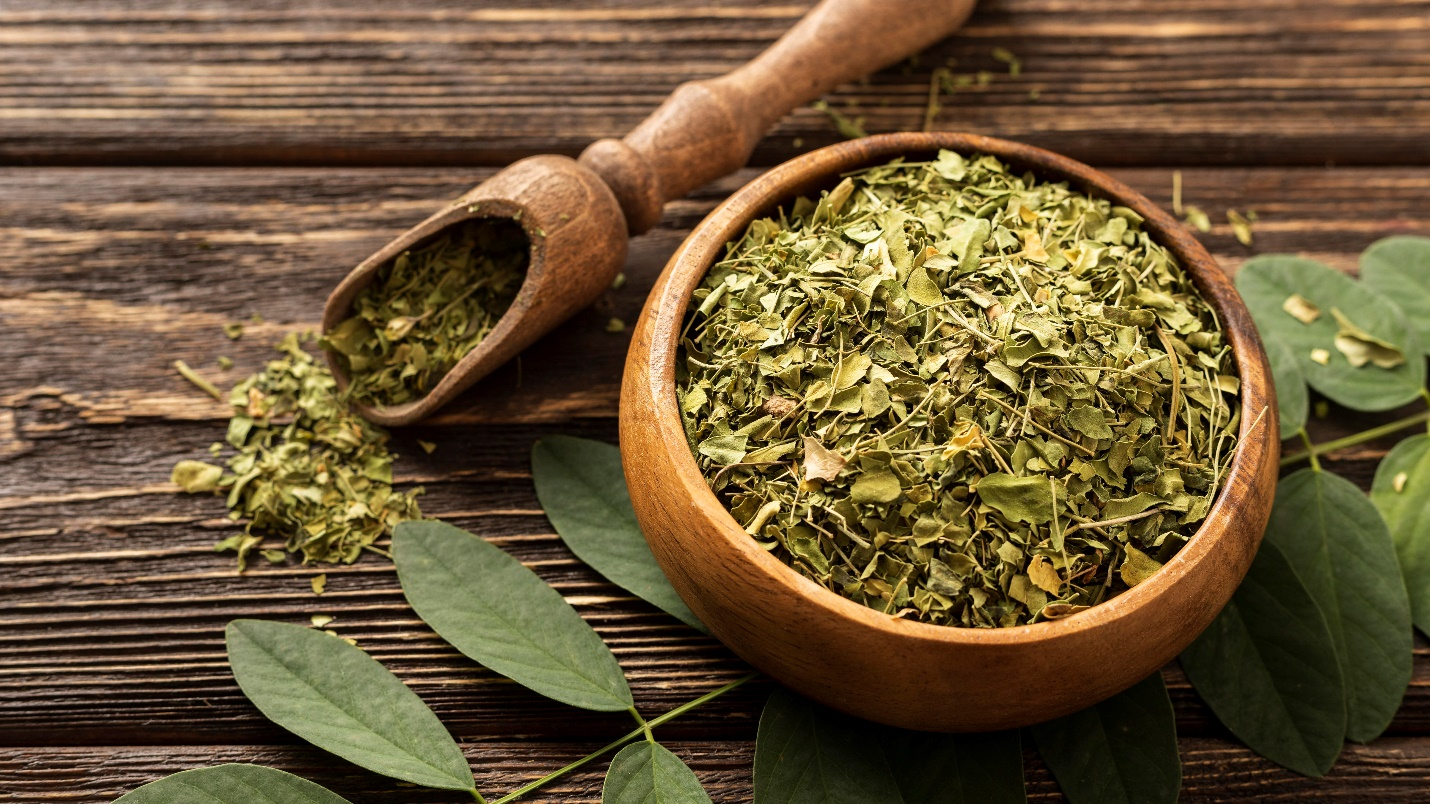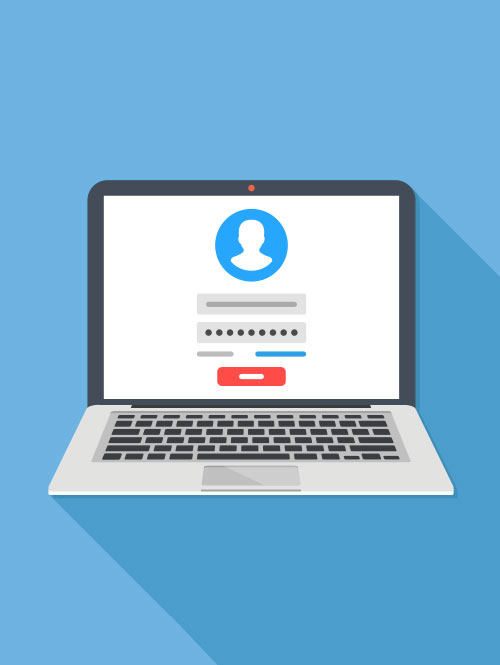Indian Railways has registered a record revenue of Rs. 2,70,000 crore (US$ 31.57 billion) by the end of FY25.
Revenue of Indian railway sector companies is expected to grow 5 % in FY26, with operating margins around 12 %, supported by government capital outlay of Rs. 2,52,000 crore (US$ 29.41 billion) and a strong order book-to-income ratio of 2.77.
Foreign Direct Investment (FDI) inflows in railway-related components stood at Rs. 9,163 crore (US$ 1.43 billion) from April 2000-March 2025.
As of April 1, 2025, Indian Railways has sanctioned 431 infrastructure projects, including 154 New Line, 33 Gauge Conversion and 244 Doubling, covering 35,966 km at an estimated cost of Rs. 6,75,000 crore (US$ 78.41 billion). Out of this, 12,769 km has
been commissioned, with an expenditure of approximately Rs. 2,91,000 crore (US$ 33.65 billion) up to March 2025.
Indian Railways plans to invest Rs. 16,70,000 crore (US$ 193.98 billion) by 2031 to modernise 1,309 stations, expand freight corridors, develop high-speed rail projects, and electrify tracks, aiming to boost operational efficiency and reduce logistics costs.
India’s export of railways grew at and reached US$ 315 million in FY24 as compared to US$ 173 million in FY21.
Since 2016, Indian Railways has exported over 1,000 rail cars, 3,800 bogies, 4,000 flatpacks, and 5,000 propulsion systems to countries including Australia, Canada, Germany, Egypt, Sweden, Brazil, the UK, Saudi Arabia, France, Mexico, Romania, Spain, Italy, Mozambique, Senegal, Sri Lanka, Myanmar, Bangladesh, and the Republic of Guinea, reflecting rapid growth in global exports up to 2025.
The Marhowrah Diesel Locomotive Factory in Bihar will export 150 Evolution Series ES43ACmi locomotives to Guinea’s Simandou iron ore project under "Make in India," in a Rs. 3,000 crore (US$ 345.9 million) deal, boosting India’s global railway exports with advanced 4,500 HP locomotives and creating over 2,100 jobs nationwide.
Number of passengers increased by 67 crore to reach 715 crore in FY25.
144 Vande Bharat trains are operational as of August 2025.
Indian Railways will launch the first Vande Bharat Sleeper train in September 2025, offering speeds up to 180 kmph. With features like USB charging, modular pantries, enhanced safety, and showers in 1st AC coaches, it aims to redefine long-distance rail travel.
As of March 2025, Indian Railways operates more than 13,000 passenger trains, including 4,111 Mail and Express trains, 3,313 Passenger trains, and 5,774 Suburban trains.
During FY25, the total freight revenue stood at Rs. 1,75,000 crore (US$ 20.50 billion), compared to Rs. 1,68,293 crore (US$ 19.37 billion) achieved during the same period last year.
In August 2025, Indian Railways posted a record Rs. 14,100 crore (US$ 1.6 billion) in freight earnings, with total freight volume rising 8.5% YoY to 130.9 million tonnes, driven by strong coal, steel, fertiliser, and diversified cargo growth. Cumulative freight loading for FY26 so far increased 3.1% to 673.6 million tonnes, while coal, which forms over half of the freight basket, is expected to see higher post-monsoon loading from Q3.
During FY25, the total passenger revenue stood at Rs. 94,927 crore (US$ 11.10 billion), compared to Rs. 70,693 crore (US$ 8.77 billion) achieved during the same period last year.
Passenger volume on Indian Railways grew 6 % in FY25 to over 7 billion passengers, with revenue rising nearly 50 % to Rs. 75,215 crore (US$ 8.7 billion), boosted by Vande Bharat trains and higher chair car earnings.
In FY25, Indian Railways loaded 1,617.0 MT of freight and Revenue rose by approximately Rs. 1.75 lakh crore (US$ 20.5 billion) compared to 1.70 lakh crore (US$ 19.8 billion) last year.
Indian Railways has boosted operational efficiency by modernising trains and stations, improving punctuality to 80% in FY26, deploying advanced Vande Bharat, Amrit Bharat, and Namo Bharat services, upgrading tracks and signaling, expanding bio-toilet coverage, and streamlining catering, all while maintaining affordable fares for over 720 crore passengers.
Indian Railways is developing and creating technology in areas such as signalling and telecommunication with 15,000 km being converted into automatic signalling and 37,000 km to be fitted with ‘KAVACH’, the domestically developed Train Collision Avoidance System.


